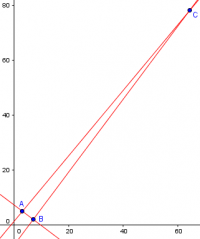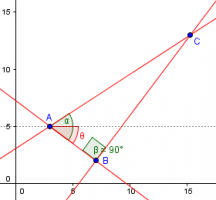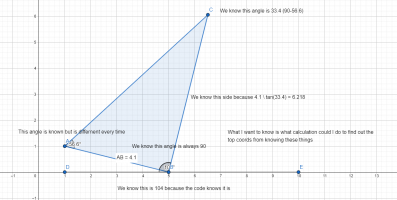So I'm trying to write code to figure this problem out, and I can't figure out the mathematical steps to find it out.
I want to know how to find the top coordinates of a triangle when given the bottom two's angles, and the bottom two's coordinates.

If this can only be done when one side of the triangle is a right angle then that is fine also.
Many thanks!
I want to know how to find the top coordinates of a triangle when given the bottom two's angles, and the bottom two's coordinates.

If this can only be done when one side of the triangle is a right angle then that is fine also.
Many thanks!




